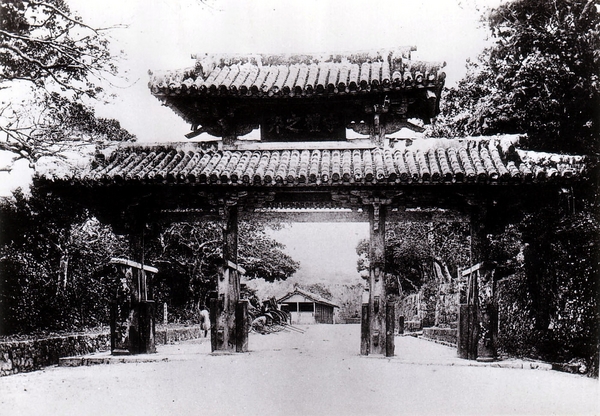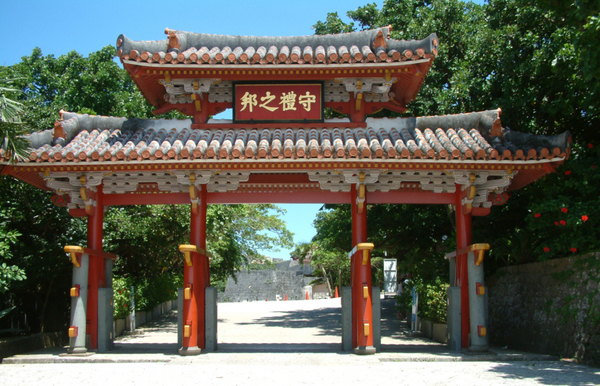Old Shuri Castle Shurei-mon Gate (Municipal designated architecture)
Historic sites



There are a number of gates to Shuri Castle; the Shurei-mon Gate is among the most famous and is also represented on the two thousand yen bill. Built around 1527 – 1555, it was also designated as a national treasure, but destroyed in World War II. The current one was restored in 1958. “Shurei no Kuni (Land of Propriety)” which means “Reigi wo Mamoru Kuni (A country which observes proprieties.)”
Basic information
- Address
- 903-0815 3 Tonokura Shuri Naha Okinawa In Shuri Castle Park
- TEL
- 098-886-2020 Okinawa churashima foundation Shurijo Castle Park Management Center
- Business hours
- April - June 8:00 - 19:30
July - September 8:00 - 20:30
October - November 8:00 - 19:30
December - March 8:00 - 18:30 - Close day
- None
- Charge
- Free
- Parking
- Toll parking
- Access information
- Take the "Yui Rail" from Naha Airport. Get off at Shuri station. A 10-minute walk away. Take the city bus line number (1, or 17), the outside city line No. 46, get off at the Shurijo-mae bus stop, and its about a 5-minute walk to the Shurei gate.
Take the number 8 Shurijo Shitamachi bus line, get off at Shurijo-mae bus stop, and its a 1-minute walk to the front of the Shurei gate.
Take the number 9, or number 25 city bus line, get off at the Yamakawa bus stop, and it is about a 15-minute walk to the Shurei gate. - URL
- http://oki-park.jp/shurijo-park/english/index.html
Additional Information
- Barrier-free
- Academic information
- Cultural property(Municipal designated architecture)
Designated Date: May 12, 1972
This gate is the second gate located about 80m west of Kankai-mon Gate, Shuri Castle. About 500m further west of Shurei-mon Gate, was the first gate “Chuzan-mon Gate.” Chuzan-mon Gate is called “Shichanuaijo” or “Shichanuturii” while Shurei-mon Gate is called “Uenuaijo” or “Uenuturii.”
It is said that the gate was been built during the reign of King Sho Sei (1527 to 1555). A history book “Chuzan Seifu” says that it might have been built with two requests of sending investiture envoys in 1528 and 1529. In the reign of King Sho Ei (1573 to 1588), a four-letter plaque was built and it became custom to hoist the plaque only at the arrival of investiture envoys, but in the late reign of King Sho Shitsu (1648 to 1668), the plaque started being hung all the time at the gate.
The architectural style is a decorative architecture descended from Paifang in China (a gate with a hanging plaque). Shurei-mon Gate is unique in that the lower roof is hung in a straight line without a break. The pillars are supported by the method called “Chigobashira,” which made the pillars robust by sandwiching them with large andesites. The upper part of the pillars supports the roof with a kind of tenjiku style masugumi (a system of supporting blocks) by sashihijiki (a bracket arm inserted directly into a pillar). You can see these structures in Japanese architecture. It has a unique Okinawan red-tile roofing, and both the upper and lower roofs have irimoyazukuri (hip-and-gable roofs). Under the eaves of the upper roof, a plaque reading “Shurei-no-Kuni (Land of Propriety)” is hung.
It is one of the buildings that represents Okinawa in its combination of ingenious construction technology from Japan, China and Okinawa. - Quote
- Naha Board of Education Cultural Heritage Division (2007) "Naha Cultural Property" Naha Board of Education
